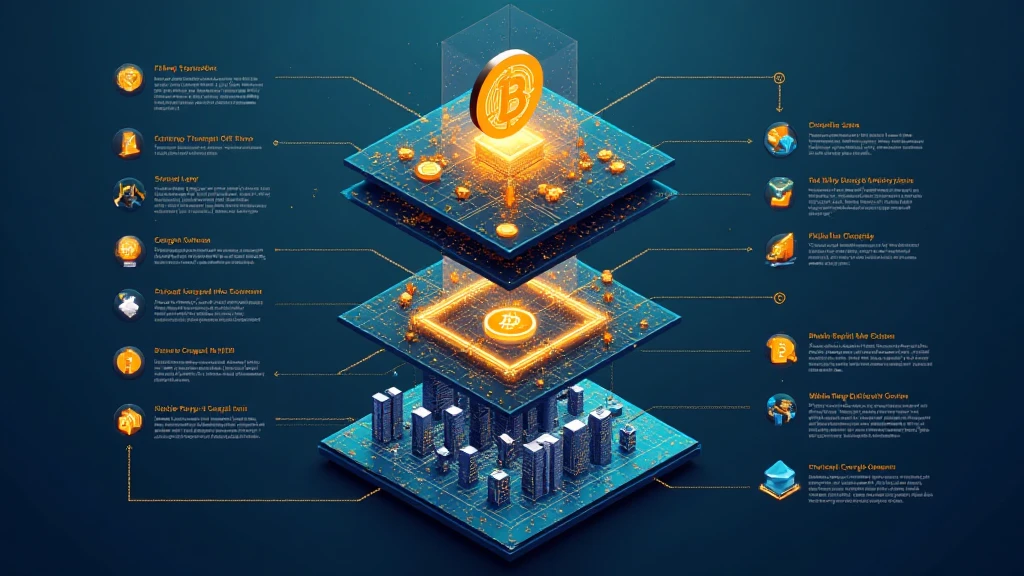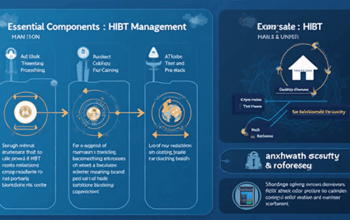Introduction
With over $4.1 billion lost to DeFi hacks in 2024, the need for robust security measures in the cryptocurrency landscape has never been more pressing. This alarming trend underscores the vulnerability that digital assets face, shedding light on the importance of understanding Bitcoin Layer technology and the foundational principles of blockchain security. This article will delve into the nuances of Bitcoin Layer, exploring its implications for the future of digital asset security and how it can protect your investments.
Understanding Bitcoin Layer
Bitcoin Layer refers to the layers built on top of the Bitcoin blockchain, enhancing its functionality to include features beyond simple transactions. The foundational layer focuses on the core operations, primarily the transfer of Bitcoin, but subsequent layers introduce new capabilities like smart contracts and increased scalability.
- **Layer 1**: The base layer (Bitcoin blockchain itself).
- **Layer 2**: Solutions aimed at improving transaction speeds and reducing costs (e.g., the Lightning Network).
- **Sidechains**: Independent blockchains that run parallel to the Bitcoin main chain.
Each layer provides different benefits that enhance overall security, functionality, and transaction efficiency. By understanding these layers, users can better navigate the complexities of cryptocurrency security.

Key Security Features of Bitcoin Layer
Consensus Mechanism Vulnerabilities
One critical aspect of Bitcoin Layer technology is its consensus mechanism. Bitcoin operates on a proof-of-work (PoW) basis, where miners validate transactions and secure the network. However, this system has its vulnerabilities. Here’s the catch: as attacks on blockchain networks become more sophisticated, they can exploit weaknesses in consensus algorithms.
For example, a 51% attack occurs when a single entity gains control of the majority of the network’s hashing power. This breach can lead to significant security risks, such as double-spending. Therefore, understanding these vulnerabilities is vital for investors.
The Role of Smart Contracts
Smart contracts, primarily operational within Layer 2 solutions, offer automated and transparent transaction processing. They function like a bank vault for digital assets, ensuring that contracts only execute when predefined conditions are met. This does not only enhance security but also adds immeasurable utility to Bitcoin.
- **Efficient Transactions**: Smart contracts reduce reliance on third parties.
- **Increased Accuracy**: By setting clear parameters, smart contracts minimize the risk of human error.
Bitcoin Layer and Scalability Solutions
As the popularity of Bitcoin grows, scalability becomes a pressing concern. Layer 2 solutions, like the Lightning Network, provide significant improvements by allowing for faster transactions and lowering fees. These enhancements cater to a growing number of users, particularly in markets like Vietnam, where the cryptocurrency user growth rate has skyrocketed in recent years.
| Year | Vietnam Cryptocurrency User Growth Rate |
|---|---|
| 2020 | ~10% |
| 2021 | ~15% |
| 2022 | ~20% |
| 2023 | ~25% |
(Data Source: hibt.com)
Optimizing Security Practices with Bitcoin Layer
Best Practices for Users
Here are several best practices for securing digital assets through Bitcoin Layer:
- Use Cold Wallets: Hardware wallets, such as the Ledger Nano X, significantly reduce the risk of hacks by keeping private keys offline.
- Enable Two-Factor Authentication: This adds an additional layer of security, requiring not just your password but also a secondary method of verification.
- Regularly Update Software: Ensure that your wallets and application interfaces are up-to-date to protect against vulnerabilities.
By implementing these strategies, users can leverage the full potential of Bitcoin Layer technology while safeguarding their investments.
Future Outlook: The Transformation of Bitcoin Layer
As we look ahead, Bitcoin Layer technology is poised to transform how we view digital asset security. Innovations in smart contracts and Layer 2 solutions will continue to evolve, addressing existing vulnerabilities while opening new avenues for growth and investment.
Moreover, as global compliance regulations become more stringent, users must remain vigilant and informed. It’s vital to stay updated about industry standards, particularly in fast-growing markets like Vietnam, where governmental frameworks are adapting to accommodate the rise of cryptocurrencies.
Regulatory Compliance and Security Standards
While innovation is crucial, compliance cannot be overlooked. The landscape of cryptocurrency regulation is changing rapidly.
- Remain Informed: Regularly check updates from local authorities regarding cryptocurrency regulations.
- Audit Smart Contracts: Regular audits help identify potential vulnerabilities and ensure compliance with regulations.
**Note**: This article does not constitute financial advice. Always consult local regulators and experts before making investment decisions.
Conclusion
Understanding Bitcoin Layer and its security practices is key for every digital asset investor. As the cryptocurrency landscape evolves and expands, users must remain informed and proactive in safeguarding their investments. With platforms like btctokenio, users can access advanced tools and resources to help navigate the complexities of digital asset security.
With this layer of security, we can ensure that the future of cryptocurrency is not only bright but also secure.
Written by Dr. James Tran, a blockchain technology expert with over 15 published papers in cryptography and the lead auditor for various known crypto projects.





